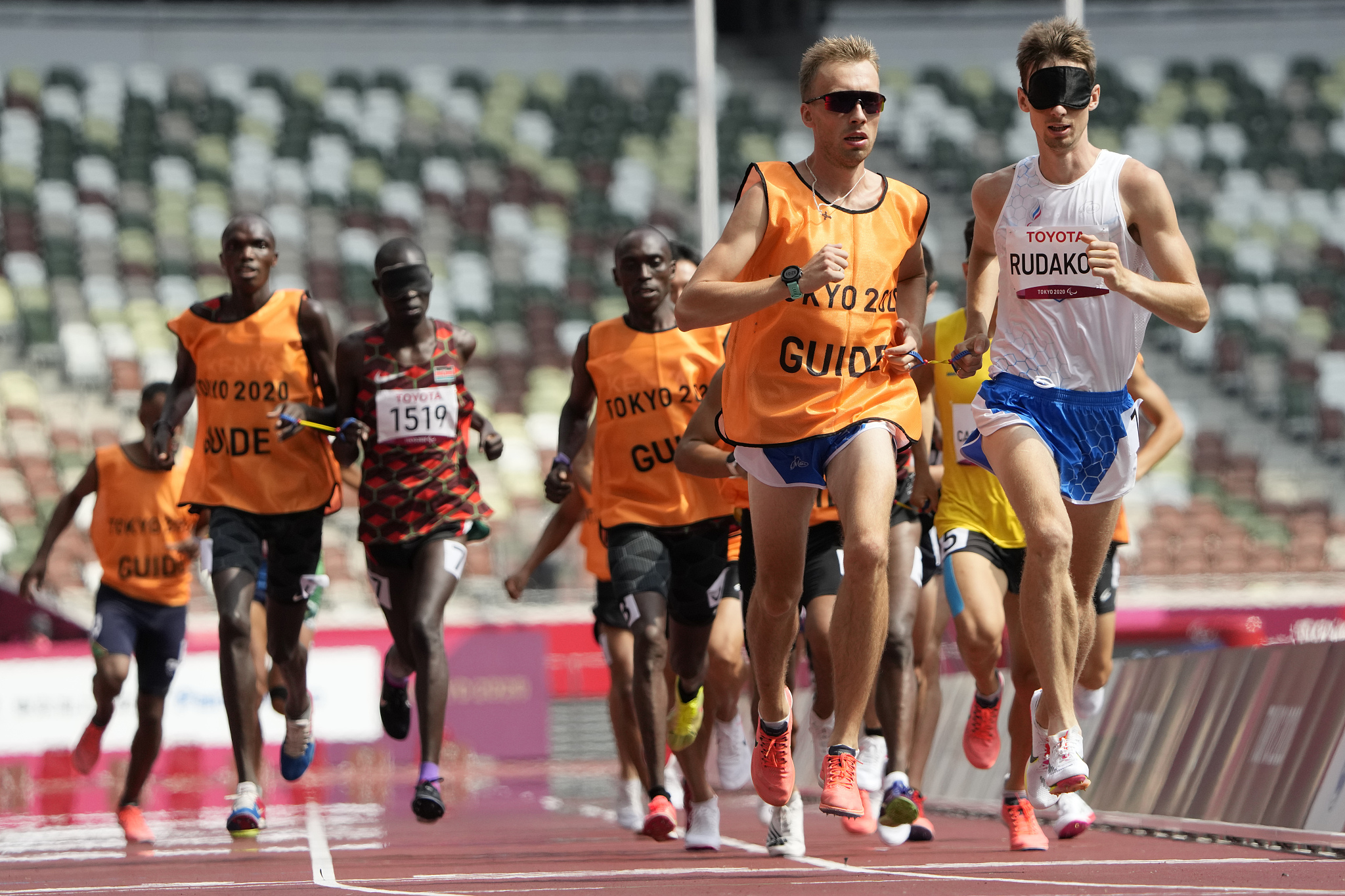
Runners with their eyes covered by masks compete along with their guides during the para-athletics men's 5,000 meters event at the Tokyo Paralympics in Tokyo, Japan, August 27, 2021. /CFP
Runners with their eyes covered by masks compete along with their guides during the para-athletics men's 5,000 meters event at the Tokyo Paralympics in Tokyo, Japan, August 27, 2021. /CFP
Intense races during the Tokyo Paralympics reveal the "shadow heroes" who work with Paralympians, as guides play an important role in helping para-athletes reach their potential and battle for supremacy in sports for the disabled.
Since the London 2012 Paralympics, guides have also received medals in certain events such as para-athletics and para-cycling.
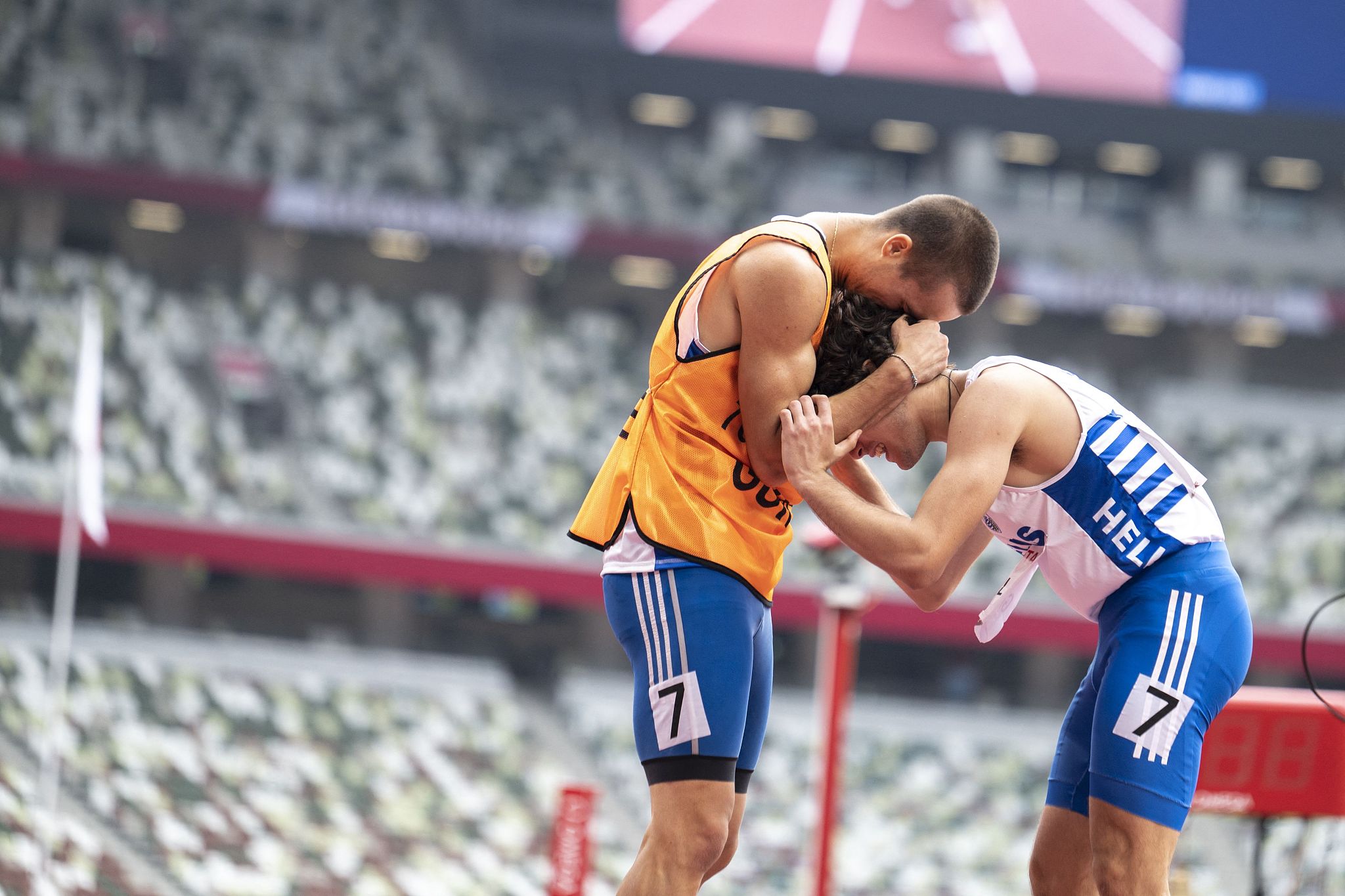
Greece's Athanasios Ghavelas (R) and his guide Sotirios Gkaragkanis react after setting a new world record during a heat of men's 100m T11 at the Tokyo Paralympics at the Olympic Stadium in Tokyo, Japan, September 1, 2021. /CFP
Greece's Athanasios Ghavelas (R) and his guide Sotirios Gkaragkanis react after setting a new world record during a heat of men's 100m T11 at the Tokyo Paralympics at the Olympic Stadium in Tokyo, Japan, September 1, 2021. /CFP
Para-athletics
Paralympians with a visual impairment can compete with callers, also called guide runners.
According to how much their impairment affects their performance, para-athletes are placed into different competition categories, consisting of a prefix "T" or "F" plus a number as T stands for "track" and F means "field" events.
T/F11, T/F12 and T/F13 are for visually impaired athletes. T11 means total visual impairment and T12 implies low vision.
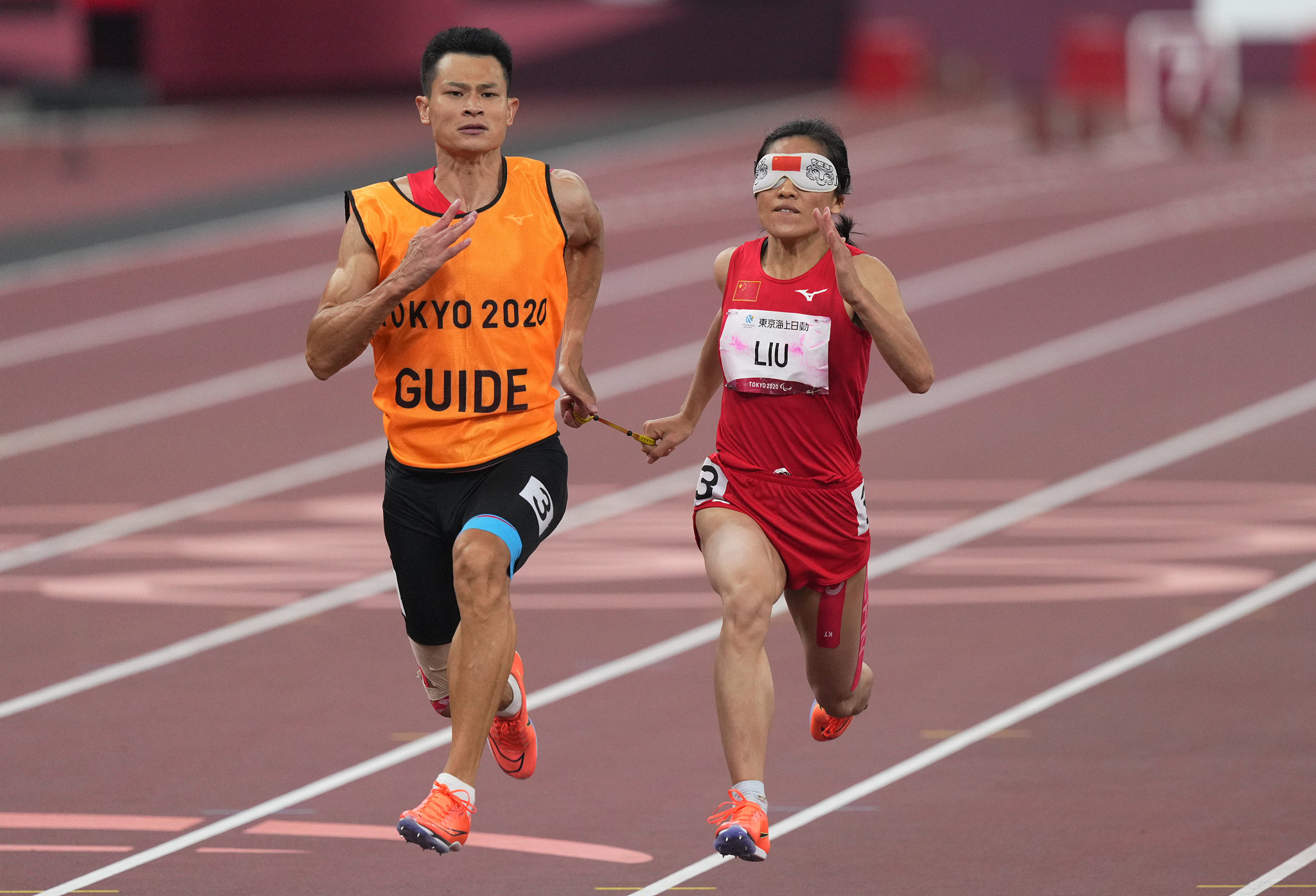
Liu Cuiqing (R) of China runs along with her guide Xu Donglin during the para-athletics women's 100 meters T11 event at the Tokyo Paralympics in Tokyo, Japan, August 30, 2021. /CFP
Liu Cuiqing (R) of China runs along with her guide Xu Donglin during the para-athletics women's 100 meters T11 event at the Tokyo Paralympics in Tokyo, Japan, August 30, 2021. /CFP
"Sport Class T11 athletes run with the guide and Sport Class T12 competitors can choose whether to run with a guide runner or alone," noted the Olympics.com.
Runners and their guide runners "stay together by holding onto a rope (tether) and running side by side."
Safety always comes first and guide runners can verbally communicate information about the course, times and surroundings in guiding the athlete to the finish line.
"Leading the runner or crossing the finish line ahead of the runner results in disqualification," according to the rules.
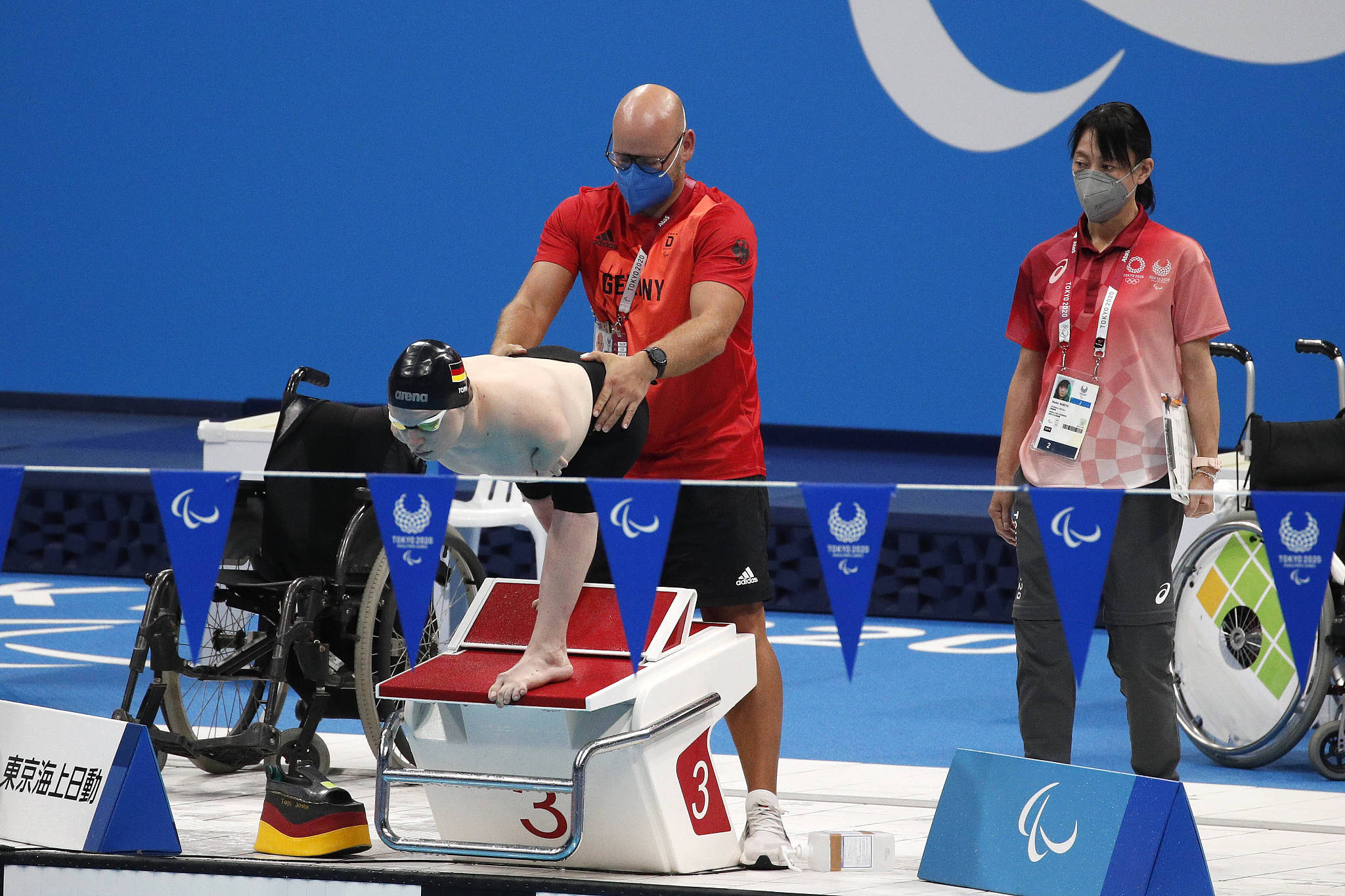
A swimmer is helped by a guide to keep still prior to the start of the para-swimming men's 50 meters freestyle S3 heat at the Tokyo Paralympics in Tokyo, Japan, September 2, 2021. /CFP
A swimmer is helped by a guide to keep still prior to the start of the para-swimming men's 50 meters freestyle S3 heat at the Tokyo Paralympics in Tokyo, Japan, September 2, 2021. /CFP
Para-swimming
Like para-athletics, para-swimming features different levels based on the type and level of athletes' impairment to ensure the competition is as fair as possible.
Swimmers can use different starting methods during the para-swimming events.
For example, swimmers with a visual impairment can locate themselves in the pool by touching the lane rope with their body.
A guide in such event is known as a "tapper" because they tap the para-swimmer's head or body with a tapping device to signal the start or finish of the race.
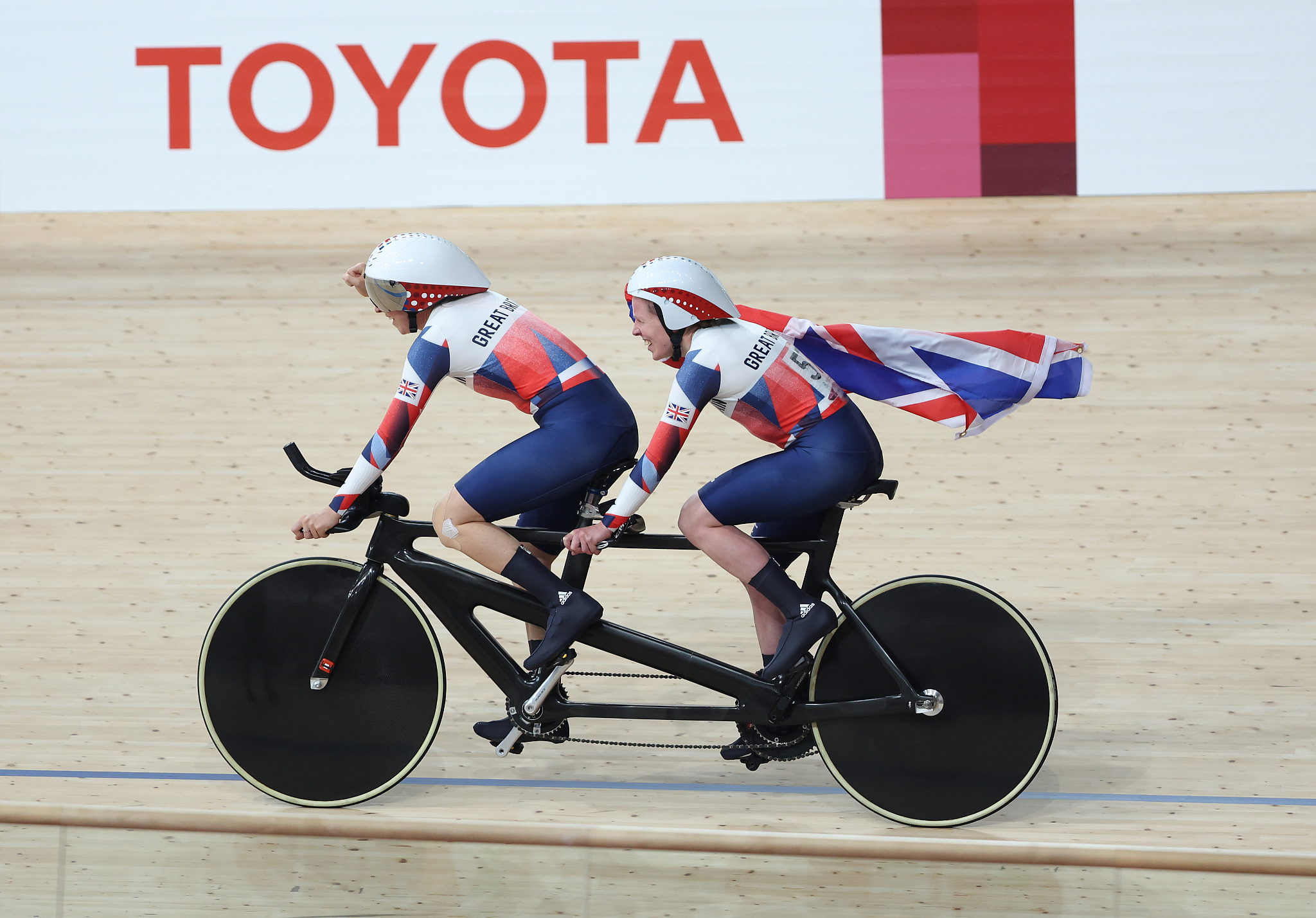
Lora Fachie (R) and pilot Corrine Hall of Team Great Britain celebrate after winning the Tokyo Paralympics women's 3000 meters individual pursuit track cycling at Izu Velodrome in Izu, Japan, August 28, 2021. /CFP
Lora Fachie (R) and pilot Corrine Hall of Team Great Britain celebrate after winning the Tokyo Paralympics women's 3000 meters individual pursuit track cycling at Izu Velodrome in Izu, Japan, August 28, 2021. /CFP
Para-cycling
Para-cycling has track and road events during the Paralympics.
Athletes with limb impairments use a bicycle and para-cyclists who can only use their upper body use a handcycle, which as the name implies is paddled by hand. Paralympians with cerebral palsy use a tricycle.
The two-wheeled tandem is used by para-athletes with a visual impairment, with a sighted guide riding in the front. Such a guide is called the "pilot," and will make tactical decisions, while the rider is known as the "stoker."

